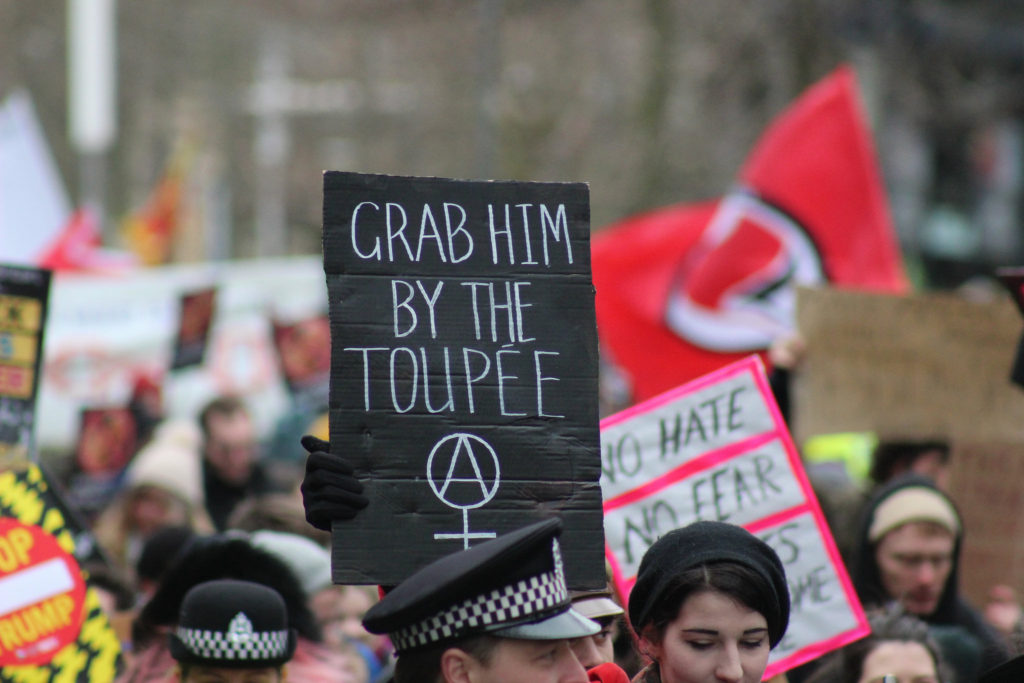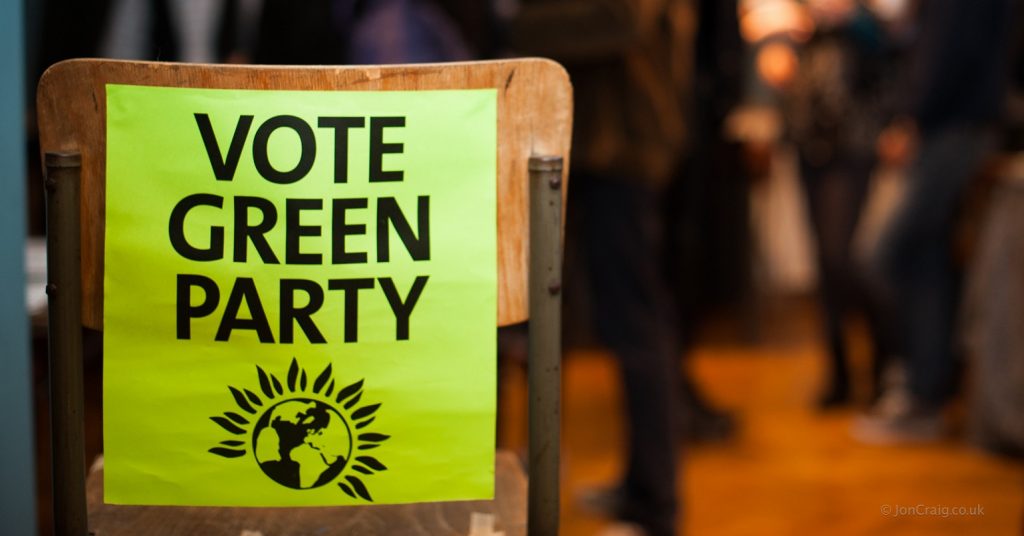I’ve had enough of your witty placards

I’m not a big fan of homemade placards on protests. There are many layers of thinking that have led me to this conclusion.
I’m not saying that home-made signs should be banned – they have their places, and I’m not begrudging people humour on protests. But to take a wider, longer view on this, its worth noting that the practice of making signs for protests, whether mass produced or individually tailored, is a recent development. Banners and flags that were designed to identify groups across a range of struggles have existed for a while, but placards as we understand them are fairly modern. They’re also quite confined in which parts of the world they show up in (mostly English speaking).
To some extent they’re confined by socio-economic context, too. Being able to turn out really neat/clever/witty handmade sign can be a sign of multiple layers of privilege: education, free time and access to both physical and cultural resources. It was the Vietnam War protests that made the handmade sign iconic, along with the ‘student protester’.
The current wave of enthusiasm for homemade signs has many causes, not least that American protests are in the news, and American still equals Cool.
At a more systemic level, we have capitulated to Neo-Liberal Individualism, surrendering possibilities for collectivity in the process. Tumblr are even issuing “19 placards that caught our eye” posts to generate ad-revenue. A generation concerned with looking good on social media, are making social-media-ready placards and calling it protest.
This hits its apex when white people come up with witty placards to get pictured besides during Black Lives Matter protests. We’ve gone beyond the problem of the media tail wagging the activist dog on this one, and become victims of our own need to ‘stand out’ amongst ‘the crowd’. Solidarity is often better done by showing up and shutting up, standing with and not speaking over. Want to amplify Black voices? Carry a “Movement For Justice” placard if available.*
Some of the arguments against homemade signs are universal to all signs/placards: they block sight lines, whether its from crowd to speakers, protesters to police, whoever. They almost inevitably lead to more rubbish being collected at the end of the day, and Britain’s weather is rarely kind to them on long days out. Some wheelchair users cite sticks on the road as a barrier to accessing protest spaces.
Printed placards have gotten a bad rep because of who hands them out on some demonstrations. This is a pretty poor excuse for the inability of the rest of the Left to organise two sheets of printed card onto a stick. There is only one solution to this: get yourselves organised, have a political discussion, democratically agree on some text, and make it happen.
There are plenty of places where placards are just not a thing on protests. You’ll still see banners carried at the front of a march, or at the front of sections of a march. In some languages, marches are called manifestations, not demonstrations, and I think this is a subtle but telling differentiation. You can demonstrate your feelings with snappy slogans and witty commentary, but to truly manifest them, you need a collective of bodies.
There are plenty of symbolic alternatives to carrying signs. Candles (battery powered, preferably) can be powerful. Those Tiki things just make you look like middle-class twats. ‘Tools’ of whatever description have been popular down the centuries. The most powerful I’ve been part of is linking arms – you really feel your collective-ness. The options are endless.
*Movement For Justice are an amazing Black-led activist group, which started out in anti-deportation campaigning, and are slowly morphing into a much deeper and broader political organisation, bringing context and capacity to new issues.




I think the author needs to review their perspective and focus on being grateful for all those who are on a march/rally/protest and work towards the unity of those people, rather than actively against it.
There were “homemade signs” in the revolution of 1918 in Berlin. Berlin is cool.
Some of this needed to be read back for errors, and as an argument the piece is incoherent.
It’s a collection of superficial preferences and twisted perceptions. The old way is inherently good, new trends are bad, individualism is bad, social media is bad, people who have handmade signs are definitely just *******, and so on.
“democratically agree on some text…” ?!
To hell with that… it’s my placard and I’ll put whatever I want on it.
There has to room for individuals to assert their independence of thought, to protect their dignity in whatever way they see fit, especially if they perceive that repression of certain ideals is growing. Yes, there is emotional comfort in the togetherness of linking arms behind a common cause, but some people also find power in protest through personal statements.
Whilst Graham makes some valid points, it would be disconcerting if the accusation of “privilege” was now being used to suppress individuality and creativity. Do you really wish to be giving the message that to support a protest individuals should be “showing up and shutting up,” carrying only banners approved by lead organisers and perhaps only expressing approved opinions? If so, that seems worryingly authoritarian and is not the kind of protest I would wish to support. It also overlooks the benefits that more individual and creative expressions of protest bring in terms of extending a message beyond its originating bubble.
+1
Nothing more than a snooty bash at people who have taken initiative to make their own placards.
What rubbish , home made placards ( witty or not) have been a part of protests and demos since the Vietnam and CND marches of the sixties.
I think the author lacks a sense of humour.
But on a serious point, you can’t put the genie back in a bottle. People make placards for marches and choose what they feel is appropriate. While organisers can make placards with a common message, I would question the march with identical placards.